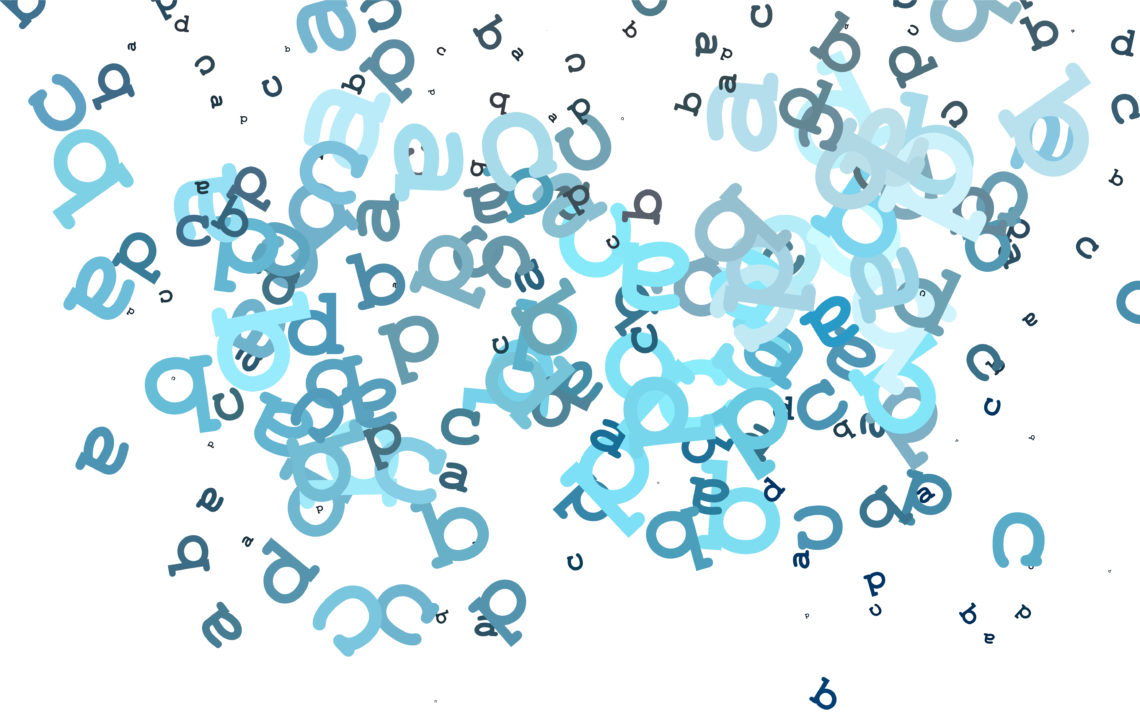One of the most common justifications for not teaching reading as a code in which letters correspond to sounds is that written English contains too many exceptions, and that attempting to teach them all will only lead to confusion. In reality, however, the vast majority of English words are spelled phonetically (50%) or contain only one irregular sound, usually a vowel (36%). (Research also indicates that children can often infer the identities of many common words with slightly irregular misspellings.)
I recently posted these statistics on Facebook and received a predictably snarky response of “How many perfectly phonetic words are in this post?” as if the point of the post had been to imply that English was a 100% phonetic language.
This, alas, is an exchange typical of the conversation surrounding phonics: one makes a nuanced, reality-based comment, and someone jumps on it with a deliberate distortion in order to demonstrate that something that was NOT said (or implied) is untrue.
Predictable and inane as the retort was, though, it did get me thinking about what exactly it means for a word to be phonetic, and how misconceptions about that idea can inadvertently turn what could be a reasonably coherent conversation into an exercise in which two people talk past each other.
When I write about phonics, I generally refer to correspondences between sounds and letters and groups of letters, and I’ve always taken it more or less for granted that the “groups of letters” part was widely understood to be an important aspect of phonetic decoding.
I’m not so sure that this is the case, however.
I suspect that part of the reason I take this assumption so much for granted is that I started out tutoring French, a language that is largely phonetic in terms of groups of letters as opposed to single letters (e.g., aient is pronounced “ay,” and oi is pronounced roughly “wah,” even though the individual letters make very different sounds).
Whenever people complained that French pronunciation was just so complicated, I’d look at them, puzzled, and respond that French was in fact perfectly phonetic—it just played by different rules than what they were used to.
(Side note: France briefly experimented with Whole-Language instruction a few decades ago, but the results were so appalling that a phonetic approach was reinstated almost immediately.)
And as long as we’re talking about “perfectly phonetic” languages, consider Italian—a language so regular that if you ask a native Italian speaker how a word is spelled, they’ll generally just pronounce it really slowly.
Interestingly, though, Italian has both single-letter/sound correspondences AND letter-group/sound correspondences. For example, ch makes a “k” sound, and gn makes “nyuh” sound (like a Spanish ñ).
Furthermore, certain consonants can be either hard or soft depending on the vowel that follows: c makes a “k” sound if followed by a, o, or u, whereas it makes a “ch” sound if followed by e or i.
I’ve taught Italian to native English speakers, and trust me when I say that some of them found the pronunciation of this so-called “easy” language anything but.
While English is an outlier in its number of patterns and exceptions, constructions that are claimed to make it unphonetic are also present in other, far more regular languages.
So if we’re going to talk about whether English is a “phonetic” language or not, it needs to be understood that phonetic does NOT mean that 1 letter = 1 sound, always.
In reality, languages can be phonetic in two different ways:
1) Single-letter/sound correspondences
2) Multi-letter/sound correspondences
Usually when people think of the latter, they think of digraphs (two letters that make one sound) such as chand sh, but in fact longer strings of letters can also be used to create various spellings of common sounds.
For example, the ough sequence makes an “uff” sound in rough, tough, enough; and an aw sound when followed by a final “t” (thought, bought, fought, sought, brought, wrought).
The eigh sequence makes an “ay” sound in words like weigh(t), neigh, eight, and sleigh(t), and reign.
This also holds true for endings like -tion, which function together to make a “shun” sound. The letters can, and should, be learned a fixed unit.
These are alternate patterns, even if they do themselves contain some exceptions.
They may not be phonetic in terms of individual letters, but they are phonetic as GROUPS.
Thinking about—and teaching—phonics this way requires flexibility: it’s “not all or nothing,” but “both/and.” It also requires an understanding of, and comfort with, the fact that rules and exceptions can coexist, and an ability to convey both without causing undue confusion.
That is an enormously challenging tightrope to walk.
It also requires a lot of knowledge, as well as a certain level of curiosity about language—explaining how and why some of these exceptions came about (in an age-appropriate way) is generally a much more interesting and effective way to teach than saying, “Memorize it this way because I said so.”
I’ve been in classrooms where teachers effectively said as much, even though there was a logical explanation available, and the students came away frustrated and ready to reject the topic as arbitrary and pointless. These were teenagers, but I think the principle holds true regardless of age.
All this is to say that if members of the general (blog-commenting) public insist on attacking a simplistic, straw-man idea of phonics, all that’s really lost is the five or so seconds it takes to skim through their banalities, but if a significant portion of the education world is buys into it, that’s a whole different story.
People (including professors of education) cannot teach what they do not understand, and teachers who are confused about how English works will produce students with knowledge gaps and misunderstandings—and these may have consequences for years to come.





